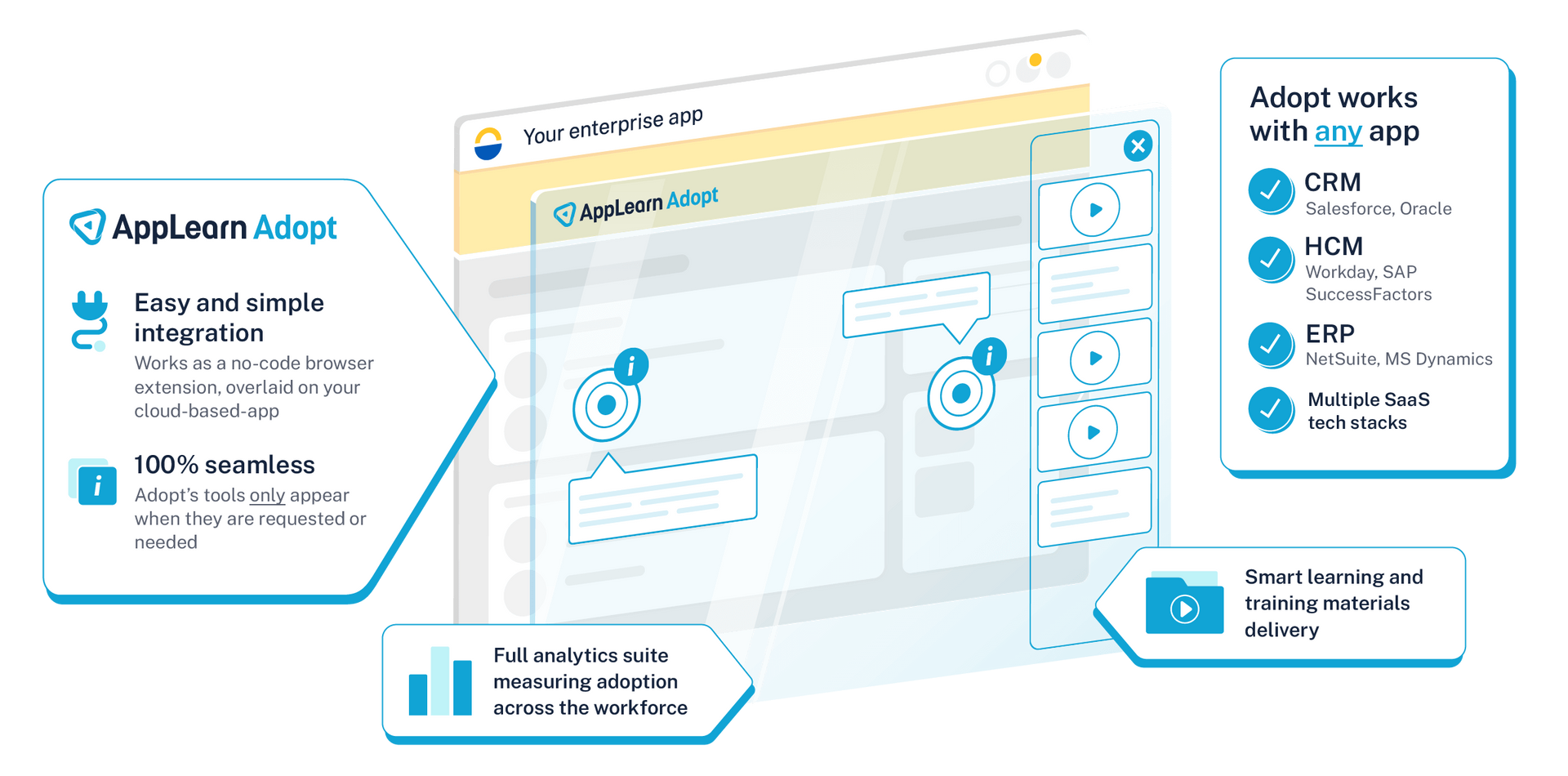News
DAPs are a force multiplier according to Gartner
DAPs are a force multiplier according to Gartner
Until recently, a digital adoption platform (DAP) had been a new technology many organizations did not know they needed. But times are changing, and DAPs are going from strength to strength. Tori Paulman and Lane Severson’s keynote speech, “Change Today to Change Tomorrow” at the Gartner Digital Workplace Summit UK positioned DAPs as a force multiplier in the wider digital employee experience space, highlighting the huge potential for organizations moving forwards.
Connecting value
The keynote highlighted the importance of ‘connecting everything to value’ focusing on moving from a ‘user experience’ to a ‘human experience,’ which is crucially important considering the average employee uses around 11 applications to do their job with 36% using between 11 and 25 (Gartner). It is important to recognize that managing a vast number of applications can become a barrier to accomplishing meaningful work.
‘Connect everything to value’ as an objective resonates with me, particularly with the work we are doing at AppLearn. Our mission is to make software work for everyone, and when you have barriers such as 25 disparately connected applications with different UIs, processes, and reporting – it’s easy to see the struggle for employees to effectively achieve their goals and difficult to find the value in that way of working.
The new normal is already here
The digital workplace is not becoming the new normal – we are already there. Organizations must enable employees with a digital workplace that delivers a frictionless human experience. Not only is this a powerful way of improving productivity within an organization, but helps employees reach their full potential, and feel fulfilled in their roles. But how do organizations make the steps required to connect value and improve the human experience?
This is where a digital adoption platform (DAP) is a force multiplier.

A digital adoption platform (DAP) works by layering itself over software, supporting employees by offering guidance when and where they need it, resulting in a much smoother way of working. The true value of a DAP is its ability to use multiple data points to identify areas of friction. DAPs can then be used to deliver support in the flow of work, thus improving productivity in the long term. And it is not just current applications and employees where it can be useful, it is a valuable tool for onboarding new members of the team and rolling out new software to guarantee stronger adoption rates.
The human experience moves away from simply training employees how to perform a task, but focuses on delivering the digital dexterity to excel in their roles. Employees need to be experts in their job, not 25 different software applications. DAPs provide a layer of abstraction from the underlying applications that allows for people to be experts in their jobs, without worrying about being software experts.
“By 2027, organizations that promote workforce digital dexterity will have stronger revenue year over year.” (Gartner)
The DEX leader
Gartner advocates having a DEX (digital employee experience) leader within organizations with the goal of unifying, or at the very least, creating a “digital thread” which ties the environment together and puts the employee at the center of the equation to create a human experience that is wrapped around the employee, guiding them to successful outcomes. It goes beyond creating a better user experience, it is about guiding the entire business through the intricate digital environment.
Statistics show that 29% of employees struggle to find the information or data needed to do their jobs. An independent AppLearn survey found employees lose 2.5 hours a week looking for support on how to use software applications, adding up to over three working weeks a year. It is demotivating for the employee and expensive for the organization.
The idea of organizations having a DEX strategy is one which is growing rapidly. By 2025, 50% of IT organizations will have established a DEX strategy, team, and management tool, up from 15% in 2022. The DEX leaders who will build these strategies will understand the value of moving from user experience to human experience by placing the employee at the center of our digital evolution. Their role goes beyond strategy and technology and they understand the complex technological change employees are navigating.
Moving from ROI to ROE
ROE (return on employee), not ROI, has a 100x multiplier within business according to Gartner. It is not an entirely new concept, nor does it seem like a surprise to those leaders who recognize the value of putting people at the heart of everything. But the concept of the ROE goes beyond improving culture or adding new benefits. Organizations with DEX strategies to actively improve the way employees are doing their jobs and leaving behind the need to go on a digital safari, will have the biggest impact.
We are shifting gears to be not just tech leaders, but experience leaders.
CIOs are leading the way in employee experience
“The CIO has more influence on positive employee experience than the CHRO.” (Gartner)
The moment when I first heard this, I thought this phrase was bold, however, when you consider how much time employees spend using technology, it makes complete sense. The top digital challenges for organizations in 2023 were cited as:
- Inclusive software experiences
- Integrated application experiences
- Smart user segmentation
- Outcome-based adoption strategies
- Asynchronous learning and real-time user support
- Self-reliant software users
- Data-driven adoption strategies and end-user analytics
How you can make the steps to success
Recognizing the need to place an emphasis on the human experience and understanding the long-term effort to achieve this is the first major step to achieving a better digital employee experience. Understand the challenges your employees are facing and look to introduce a DEX strategy to solve these issues over time.
A DAP is another logical step to moving to this new way of working. Gartner predicts DAP usage within organizations will be at 70% by 2026, showing that they see the value in DAPs helping businesses achieve this new way of working. At AppLearn, we are helping organizations to see how their people use their tech and place real-time guidance in any app to support them while they work. Market-leading organizations are already using it to help their people finish processes in half the time and double the likelihood of accurate task completions.
Article by
Andrew Avanessian
Share this article





